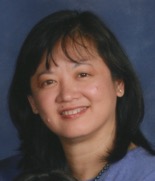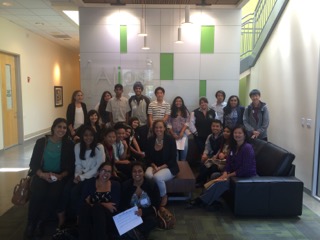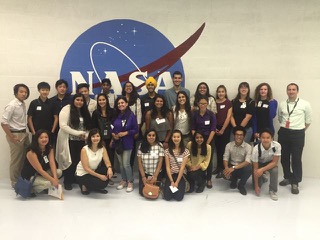Katy Korsmeyer: Planting Seeds for Future STEM Students

“The day I realized I could connect my science studies with my desire to expand opportunities for young people made me – and continues to make me – feel lucky and blessed,” says Adjunct Lecturer of Biology, Katy Korsmeyer.
The aha moment took place while Katy was a postdoctoral fellow at the University of California, San Francisco and volunteered with the Science and Health Education Partnership (SEP) program to engage children in science study. While many of her peers were driven to pursue publication, she was hooked by the immediate feedback she received from the youth she worked with.
“Every scientist I know got into the field to help people, but for me working with kids was the quickest way to feel that my learning was making a difference. And sometimes that impact is something the students credit for changing the direction of their lives, which humbles me greatly,” she explains.
Although Katy finds meaning in her time in the classroom, her deepest connections are formed when working with her students as a club adviser. She is involved with SCU’s Women in STEM, Science Engineering Mentoring Outreach (SEMO), the Association for Women in Science, and Silicon Valley STEM Internship (formerly known as Bridge to Employment).
This latter affiliation began some 14 years ago and has allowed her the opportunity to play a pivotal role in the lives of more than 200 high school students in the South Bay. When Bridge to Employment (a Johnson & Johnson global initiative supported by their local affiliate, LifeScan) approached her to be involved with the program, her one request was that the program serve more than the same 20-30 kids over four years. Instead, they partnered with her to come up with a plan for summer internships that also included SCU student researchers as mentors and a lab curriculum to sustain the program for the past 14 years.
The new strategy allowed many more students to benefit from Johnson & Johnson’s investment. By providing mobile glucose monitoring kits that would go out to schools, LifeScan was able to improve blood sugar monitoring for thousands of community members while giving the student interns practical, hands-on training in scenarios that improved the lives of people in the community they lived in.
When asked how she sustains the momentum for 25 years of outreach, Katy says, “I feel like the public can often think of my colleagues and me as stereotypical mad scientists, so it’s important to me to engage with the community and show them how we help make a difference in improving people’s health and improving future opportunities for kids,” Katy explains. “It also shows our Santa Clara students that we practice what we say we want to see in them – a drive to be citizens looking to create a more humane, just, and sustainable world.”
Over the years, there have been as many lessons for her as for her students. One such discovery was one that she and her colleague, Mary Lou Stuart, made after marveling at the amount of growth in their student interns in just a single summer. By working with students 30 hours per week over six weeks, they were spending more time with students during the internship than classroom teachers may spend with them in a whole school year. And when the soft skills in leadership, teamwork, and character that were developed alongside the science learning were factored in, the experience became transformative for many of the participants.
When reflecting on one of the most rewarding transformations she has witnessed in a student during the program, Katy recalls a young man named Alex Tran. When she met Alex, he was a high school student who needed to watch his little sister while his single mom worked to support them. After much convincing and some logistical juggling, Alex took part in the program. He was so impressive in his work and in his leadership ability that Katy invited him to work in her lab during the summer after his internship. He then went on to study business at Stanford and is now at the venture capitalist firm Kleiner Perkins Caufield & Byers. Even though he chose to study business, he now works to invest in STEM businesses. He told Katy over lunch last year that the internship changed his life.
Other former students feel the same. Meghan Garrett ’14 met Katy in 2009 through the high school internship and continues to be appreciative of her mentorship today. “When I eventually ended up at SCU, I worked in the same lab and mentored high school interns in the same program. I had really come full circle! I am so grateful that Katy is dedicated to seeing kids get involved in getting hands-on experience in science from an early age, because I know for sure that I wouldn't be half as successful in my career today without those initial opportunities,” Meghan explains.
Another is SCU alum Heidi Cossentine ’12, who reflects on the introductions Katy helped her make to the right people in the Bay Area community to partner with to help reach a shared goal: “While I was starting SEMO, Katy introduced me to local high school teachers who were willing to work together to have SCU college mentors teach their high school students important soft skills for their future careers. Without Katy’s advice, expertise, and assistance, I would not have been able to get the project off the ground and I will always be thankful for her support, encouragement, and advice over the years. Katy is very smart and talented and we are so lucky she has chosen to invest her time in our growth."
These life changes are precisely what happen when a professor like Katy Korsmeyer finds a way to connect her knowledge with her passion to the benefit of her current students, future students, and the community at large.

